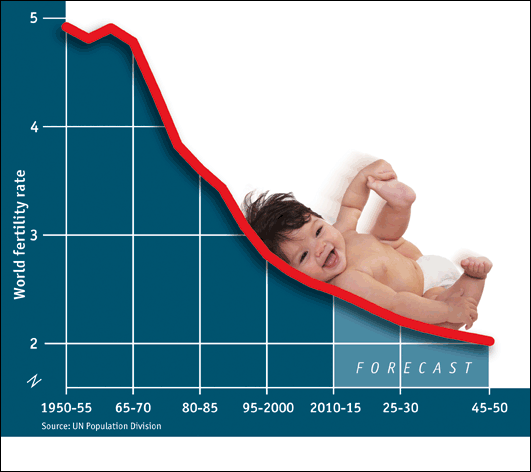Adair Turner writes: The United Nations’ latest population projections suggest that Japan’s population could fall from 127 million today to 83 million by 2100, with 35% of the population then over 65 years old. Europe and other developed economies are aging as well, owing to low fertility rates and increasing longevity. Population aging in advanced economies is the manageable consequence of positive developments. By contrast, rapid population growth in many poorer countries still poses a severe threat to human welfare.
In 2008, the UN projected the world’s population reaching 9.1 billion by 2050 and peaking at about ten billion by 2100. It now anticipates a population of 9.7 billion in 2050, and 11.2 billion – and still rising – by 2100, because fertility rates in several countries have fallen more slowly than expected (in some, notably Egypt and Algeria, fertility has actually risen since 2005). While the combined population of East and Southeast Asia, the Americas, and Europe is projected to rise just 12% by 2050 and then start falling, sub-Saharan Africa’s population could rise from 960 million today to 2.1 billion by 2050 and almost four billion by 2100. North Africa’s population will likely double from today’s 220 million.
Such rapid population growth, on top of even faster increases over the last 50 years, is a major barrier to economic development. From 1950 to 2050, Uganda’s population will have increased 20-fold, and Niger’s 30-fold. Neither the industrializing countries of the nineteenth century nor the successful Asian catch-up economies of the late twentieth century ever experienced anything close to such rates of population growth.
Ensuring that women are educated and free is by far the most important demographic challenge facing the world today. Worrying about the coming population decline in advanced countries is a meaningless diversion. The Positive Aspects of Population Decline

